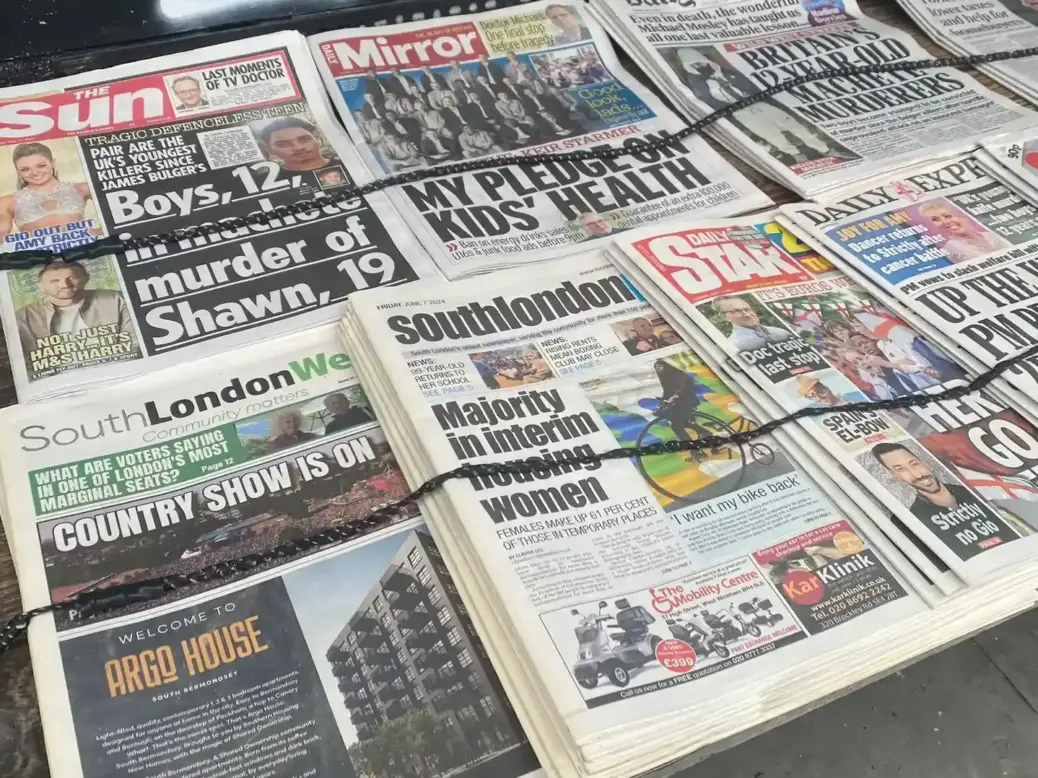
All but two London boroughs have publications covering council activities, although in some cases self-published reporters have stepped into the gap left by the withdrawal of established publishers.
Ealing appears to be the best-covered London borough, with five news outlets regularly covering news from council meetings.
South East London appears the least covered, with Greenwich, Lewisham, Bexley and Bromley having one news outlet each.
Hammersmith and Fulham, and Sutton were identified as the only London boroughs with no media outlet providing frequent coverage of council matters. Their populations were 183,200 and 209,600 respectively, according to the 2021 census.
Press Gazette has previously investigated media coverage in Scotland and Wales, tracking the emergence of news deserts.
Press Gazette spoke to Darryl Chamberlain, the editor of The Greenwich Wire, the only local paper providing frequent local political coverage in Greenwich. It is a one-man-band with a few contributions from local democracy reporters and freelancers.
He said: "I started The Greenwich Wire a long time ago as a blog after I watched a resident being treated appallingly by the ceremonial mayor at a council meeting.
"I remember thinking that a journalist there would report on it, but there weren't any journalists, so I did."
With journalistic and editorial experience at titles including the BBC and Money Saving Expert, Chamberlain continued working part-time editing and reporting for The Greenwich Wire, particularly when "the legacy papers pretty much fell away from 2015."
Six years ago, Chamberlain asked readers to contribute financially. The outlet has a monthly revenue of £1,300, of which Chamberlain takes two-thirds for his salary. The rest goes to freelance contributors.
He added: "Covering Greenwich almost entirely alone is disconcerting, it’s very odd not having anyone to check yourself against.
“It’s not healthy that it is down to me, one-part timer to cover the council meetings, I really have to pick and choose.”
Chamberlain said that the situation was similar across South East London, noting Lewisham, Bexley and Bromley as seriously lacking local reporting.
When asked about the South London Press, which has grown from covering four boroughs to over ten, he said: “When the South London Press does original reporting, it is high quality."
But, he added that it is stretched in terms of the large patch it covers and relies heavily on BBC-funded local democracy reporters.
While there has been a decline of the 'legacy papers', there is evidence of smaller, online-only independent news outlets filling the gaps, with The Greenwich Wire being just one.
Haringey Community Press is another example, a free independent community news website.
Launched in November 2021 as an expansion from an earlier title established in 2016, Haringey Community Press became online-only this last month after publishing 82 print editions. It attributed this switch to "the unreliability of the local advertising market".
Chiswick W4 claims to be the "largest local community website of its kind in Europe" with over 200,000 visits per month. It is supported by freelances and local democracy reporters, and aims to cover Chiswick-related news with "no editorial line".
Similar sites cover news across London but in many cases, they publish stories irregularly and/or do not cover council meetings. SheperdsbushW12 is one such example.
Greater London has a population of around 9 million, or roughly equivalent to Wales and Scotland combined.
In 2017 Press Gazette noted that Kensingon and Chelsea had gone from having two local newspapers with around ten staff in 1990 to one reporter covering the borough on a part-time basis at the time. Many felt this meant the safety concerns raised by Grenfell Tower residents in advance of a fire which killed 79 people were ignored.
The Kensington and Chelsea News closed in 2017. Today the borough is one of many covered by the South London Press.
Methodology
Press Gazette contacted all London local authorities, requesting a list of the outlets that covered the council’s news on weekly basis. Of the 33 local authorities, 23 responded.
This list was extended using data from Public Interest News Foundation (PINF) and Google News searches for the local authority.
The focus was on collecting information on media outlets that cover certain local authorities, not where those media outlets are based or where people consume local media.
We also visited each online news outlet’s website to ensure that those who published less frequent reports of council activities were not listed. This was done once, meaning that the data reflects the coverage at the time the research was conducted.
Many London papers cover multiple boroughs, such as the South London Press which covers most boroughs in South London. We therefore investigated how thoroughly they covered each borough before adding them to our list.
My London and the Evening Standard do not feature in this study because they do not appear to provide weekly borough-level political coverage.
Disclaimer: Mapping local news provision in the UK is challenging because most titles no longer publish audited ABC print circulation figures, and where newspapers survive they are often hollowed out. That is why we have based our research on trying to track published relevant online content, requiring us to make qualitative judgment calls.
If you know of a news outlet that should be added to our list (or you think some should not be on there) please email pged@pressgazette.co.uk.
Email pged@pressgazette.co.uk to point out mistakes, provide story tips or send in a letter for publication on our "Letters Page" blog
